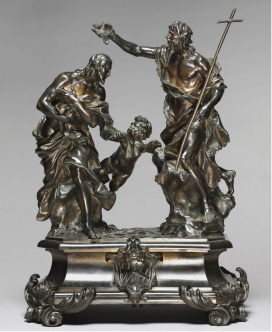There is and has been for many generations, an intriguing custom among families when a parent or parents bring their new- born child home. Grandparents, aunts and uncles, great aunts and granduncles, nephews and nieces all gather to cast an eye over the new-born. Then, the helpless, innocent new- born is taken apart:
“Look she has eyes just like grandma Molly”;
“His ears stick out like Uncle Joe’s”;
“With those hands, he is bound to end up a blacksmith like great granddad Mick”,
“Look that little smile is just like Carrie when she was new-born” (Carrie, now turning sixteen, does not want to be reminded of how she looked as a baby, thank you!);
And the photo albums and shoeboxes from under the bed are brought out with family photos going back generations and photos selected that show similarities, some quite uncanny! The new-born is suddenly an amalgam of family members spread over several generations. While there is fun and laughter and much storytelling in this custom, I believe at its heart is what I would call “a ritual of belonging” – you are one of us and a member of our family, whom we take pride in and responsibility for. And, in fact, parenting is shared; advice on how to get the young one to sleep, when to introduce the bottle (and you know the heat is just right when you can pour a drop or two of the milk onto the back of your hand without it burning!), how best to deal with teething troubles or a slight skin rash; babysitting duties are shared to enable the parents some time for themselves. “You belong to us.
The Rite of Baptism in the Christian Church is at heart a “ritual of belonging” – the community gathers and through a variety of symbols, the signing with the Cross, the pouring of water, the anointing with oil, the dressing in a baptismal robe, the lighting of a candle – each of these signs is saying to the one who has been brought for Baptism, “you belong”, “you are a member of our family,” “ we will take responsibility for you as you grow in faith.
Unfortunately, many Christians and Christian communities severely limit this ritual by linking it almost exclusively to the “removal of original sin.” This idea was put forth by St. Augustine in the fifth century but never mentioned in the Bible. We are usually taught that human beings were born into “sin” because Adam and Eve “offended God” by eating from the “tree of the knowledge of good and evil.” As punishment, God cast them out of the Garden of Eden (Genesis 3:22–23). We typically think of sin as a matter of personal responsibility and culpability, yet original sin wasn’t something we did at all. It was something that was done to us (“passed down from Adam and Eve”). Yet historically, the teaching of original sin started us off on the wrong foot—with a no instead of a yes, with mistrust instead of trust. With the idea that we are “born stained!” Personally, I consider a much truer description of Adam and Eve’s experience would be “original shame.” They hide when God comes looking for them, and when God asks why they say they feel naked. Then God asks Adam and Eve, “Who told you that you were naked?” The implication is, “I sure didn’t.” A few verses later, we see a very nurturing image of God as a seamstress, sewing garments and covering the two humans to protect them from their shame, “the Lord God made garments of skins for the man and for his wife, and clothed them.” (Genesis 3:21). [Come on now how many of you reading this were aware that it was Yahweh God at the sewing machine? In their shame and nakedness Yahweh God is close at hand!] How different than the much later and opposite notion of God shaming people for all eternity in hell. The older tradition reveals the deep mystery of transformation: God even uses our shame and pain to lead us closer to God’s loving heart.

The illustration is by the Italian sculptor Alessandro Algardi (1598 – 1654). Titled“The Baptism of Christ” it was sculpted between 1645 – 1646. There is a piece in the Cleveland Museum of Art – whether it is the original or not I am unable to determine.
